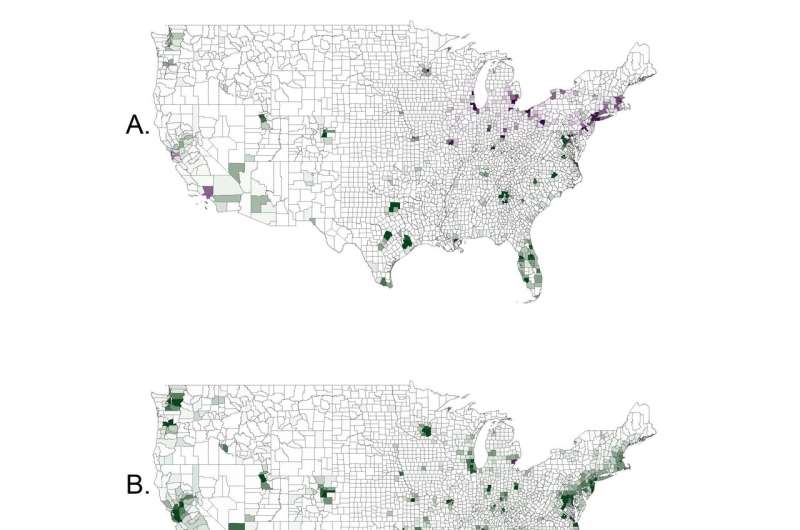Forecasting US economic and demographic shifts at higher resolution

A new approach to predicting changes in population and income at the level of individual U.S. counties could improve predictions of the effects of climate change. David Wear and Jeffrey Prestemon of the USDA Forest Service in North Carolina present their novel strategy in the open-access journal PLOS ONE on July 24, 2019.
Predicting climate change-related shifts in land use and natural resources requires accurate forecasts of demographic and economic changes. Such changes can vary widely within a country, but many forecasts are only available at the level of entire countries. Moreover, previous studies that have addressed demographic and economic shifts at finer scales have not adequately accounted for migration of people and capital to regions where earnings are higher.
In the new study, Wear and Prestemon developed a statistical modeling strategy to predict economic and demographic shifts in the U.S. at county-level resolution. Their model incorporates county-level population and income data from 1970 through 2010 and mathematically accounts for labor migration, as well as a variety of other social and economic factors, such as the expectation that pensioners will stay in their current location.
The researchers applied their model in the context of the Shared Socieconomic Pathways, a set of five future scenarios for global socioeconomic patterns previously developed by the climate-change research community. Projecting through 2070, the new model generally predicts population shifts away from the Northeast and Midwest and into the South and West. Depending on the specific scenario considered, the model predicts that rural populations will remain stable or shrink.
The authors note that it would be possible to develop a more complex model that incorporates additional variables. However, they suggest that their model straddles a useful balance between complexity and simplicity and could therefore serve as a powerful foundation for conducting finer-scale predictions of climate change effects.
The authors add: "Global assessment scenarios utilize income and population projections at the national scale, but these conditions do not change uniformly over space and time. We've developed a method for downscaling these projections to counties in the United States in a way that accounts for spatial patterns of economic growth and wage-driven labor migration. Because spatially explicit population and income growth are critical to natural resource assessments these projections should enhance the precision of land use and ecosystem service futures."
More information: Spatiotemporal downscaling of global population and income scenarios for the United States. PLoS ONE 14(7): e0219242. DOI: 10.1371/journal.pone.0219242
Journal information: PLoS ONE
Provided by Public Library of Science



















